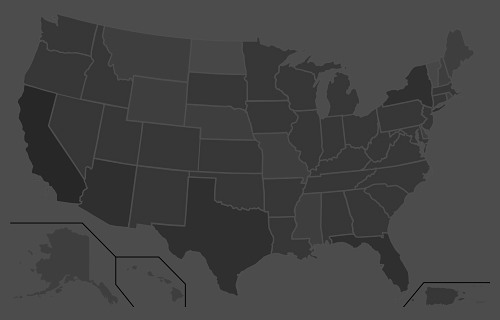“Our added winter moisture and active calling period led to a very long nesting and hatching season, starting in late April and extending into early summer, with chicks hatching as late as early July,” O’Dell said. “From a population standpoint, we are out of a deficit for the first time since 2001-2002. Quail are starting to pop up in places they haven’t been seen in a while.
“If you’ve never had the chance to experience what Arizona quail hunting built its name on, then this would be the year to get out and enjoy it.”
Meanwhile, hunters should note that the season for Mearns’ quail doesn’t begin until Dec. 4. It’s summer rainfall that plays a key role in nesting success and population numbers of this species. After a spotty and relatively weak monsoon across southern Arizona, these birds are likely to be abundant only in pockets that received sufficient precipitation this summer.
A valid Arizona hunting or combination hunt and fish license is required for all hunters 10 and older. Those hunters under 10 must either have a valid hunting or combination hunt and fish license, or be accompanied by an adult who possesses a valid hunting or combination hunt and fish license. Licenses can be purchased online or at license dealers statewide. A youth combination hunt and fish license (ages 10 to 17) is $5.
The general bag limit is 15 quail per day in the aggregate, of which no more than eight may be Mearns’ quail (when the Mearns’ season opens Dec. 4). The general possession limit is 45 quail in the aggregate after opening day, of which no more than 15 Gambel’s, scaled or California quail in the aggregate may be taken in any one day. After the opening of the Mearns’ season, the 45-quail possession limit may include 24 Mearns’ quail, of which no more than eight may be taken in any one day.
More quail-hunting information can be found on the department’s website at https://www.azgfd.com/Hunting/. Another resource for both new and experienced hunters alike is “An Introduction to Hunting Arizona’s Small Game.” Written by Randall D. Babb, the 196-page, full-color book covers where and how to hunt small game birds (like quail), squirrels, rabbits, ducks and geese. It also includes how to prepare and cook your harvest, with illustrations and recipes. The book can be ordered for $16.95 at www.azgfd.gov/publications.
Finally, hunters should check out O’Dell’s techniques for field-dressing quail at https://www.youtube.com/watch?v=3gRwZAcWzzk.
####
Publishers Notes: OUT OF STATE HUNTERS, FISHERMEN & OUTDOOR ENTHUSIASTS; Due to the Covid 19 pandemic, there could be limitations for OUT of STATE hunters, fishermen and other outdoor enthusiasts to include a 14-day quarantine requirement or negative COVID-19 testing alternative. Please check with the State's Department of Natural Resources BEFORE you travel or apply for the 2020 Fall Hunts.
Disclaimer: The views expressed on this site are that of the authors and not necessarily that of TBC Press
Oregon Department of Fish and Wildlife (ODFW) and the Confederated Tribes of the Umatilla Indian Reservation (CTUIR) have determined that the same strain of bacterial pneumonia that caused a die-off in the Lookout Mountain bighorn sheep herd earlier in the year has spread to the Burnt River herd.
This year is the first-time bacterial pneumonia (caused by the organism Mycoplasma ovipneumoniae) has been identified in the Burnt River herd. While I-84 normally separates the herds, bighorn sheep have been known to try to cross the highway. The Lookout Mountain herd ranges north of I-84 and west of Brownlee Reservoir, about 10 miles from the Burnt River Canyon herd, which is south of I-84.
ODFW and CTUIR collected samples for disease testing (nasal swabs) from a tribally hunter-harvested 4.5 year-old ram and another young ram found dead in Burnt River Canyon. Tests results show the bacterial strain in these animals closely matches the Lookout Mountain strain and is unique from strains isolated from neighboring Hells Canyon herds. This information paired with the timing of the outbreak and documentation of sheep trying to cross I-84 suggests likely transmission between these two herds.
ODFW Confirms Pneumonia Outbreak Spreads to New Baker County Bighorn Sheep Herd
Submitted by: TBC Press
Posted on: 12/03/20
The Backcountry Press
The country's premier daily HUNTING, FISHING & OUTDOOR news in the USA and around the globe. Read whats happening in your neck of the woods & beyond.
© 2020 TBC Press - All Rights Reserved Website Design by:
News # 14107
So far, ODFW has collected three dead sheep from the Burnt River herd. A very sick lamb was also put down and another sick lamb was observed near one of the dead ewes collected (likely her offspring). All of these sheep were confirmed to have bacterial pneumonia.
The Lookout Mountain bighorn sheep herd pneumonia outbreak was discovered in February 2020 and resulted in the cancellation of all once-in-a-lifetime sheep hunts in the unit this year. All lambs in the Lookout Mountain herd have perished due to this outbreak but adult mortality appears to have tapered off during the summer months as expected.
Sheep will congregate at lower elevations during the late fall and winter period, increasing the risk of disease transmission between individuals. Currently ODFW is testing and monitoring the Lookout Mountain and Burnt River herds to determine the extent of the mortality and the current infection rate in the remaining population
Pneumonia has killed numerous wild sheep in Oregon and other Western states over the past few decades and is considered the largest risk to wild sheep populations. Once a herd is infected, an all-age die off can occur and the disease may remain chronic in the population.
Disease treatment in free-ranging populations of sheep is not practical. Wildlife managers strive to keep wild and domestic sheep and goats separate to avoid transmission of the disease.
Bighorn sheep with pneumonia may exhibit signs including coughing, nasal discharge, and difficulty climbing or running. If you see sick wild sheep, contact ODFW’s Wildlife Health Lab (1-866-968-2600 / [email protected]) or your local ODFW office.
####
Publishers Notes:
Our country is still battling COVID-19. To avoid the spread of this virus and continue to enjoy outdoor activities, ALL outdoor enthusiasts (man, woman, child) should follow the guidelines set by nps.gov. These guidelines include; social distancing, the Leave No Trace principles, including pack-in and pack-out, to keep outdoor spaces safe and healthy.












